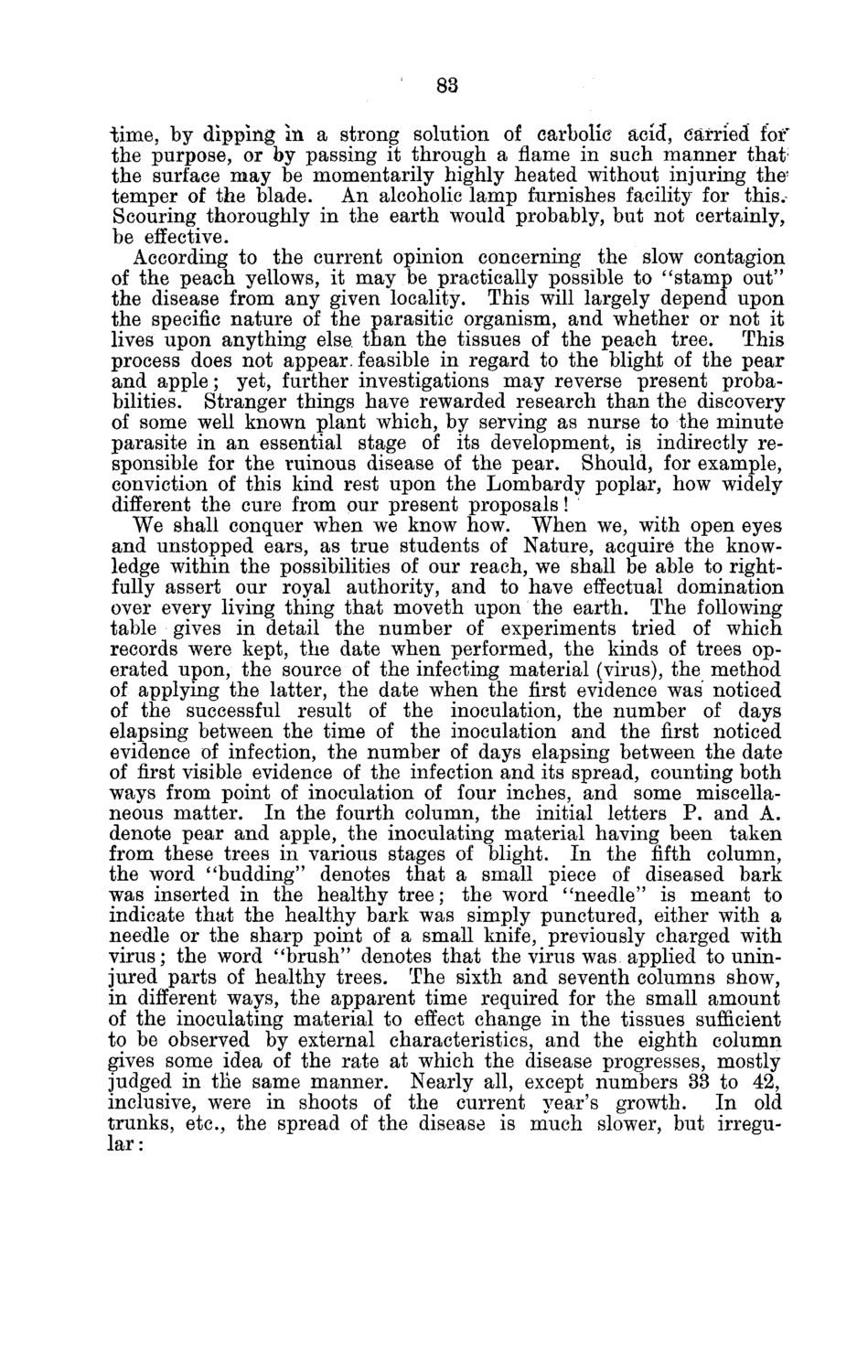| |
| |
Caption: Board of Trustees Minutes - 1880
This is a reduced-resolution page image for fast online browsing.

EXTRACTED TEXT FROM PAGE:
83 iime, by dipping in a strong solution of carbolic acid, Carried for* the purpose, or by passing it through a flame in such manner that the surface may be momentarily highly heated without injuring thetemper of the blade. An alcoholic lamp furnishes facility for this. Scouring thoroughly in the earth would probably, but not certainly, be effective. According to the current opinion concerning the slow contagion of the peach yellows, it may be practically possible to "stamp out" the disease from any given locality. This will largely depend upon the specific nature of the parasitic organism, and whether or not it lives upon anything else, than the tissues of the peach tree. This process does not appear, feasible in regard to the blight of the pear and apple; yet, further investigations may reverse present probabilities. Stranger things have rewarded research than the discovery of some well known plant which, by serving as nurse to the minute parasite in an essential stage of its development, is indirectly responsible for the ruinous disease of the pear. Should, for example, conviction of this kind rest upon the Lombardy poplar, how widely different the cure from our present proposals! We shall conquer when we know how. When we, with open eyes and unstopped ears, as true students of Nature, acquire the knowledge within the possibilities of our reach, we shall be able to rightfully assert our royal authority, and to have effectual domination over every living thing that moveth upon the earth. The following table gives in detail the number of experiments tried of which records were kept, the date when performed, the kinds of trees operated upon, the source of the infecting material (virus), the method of applying the latter, the date when the first evidence was noticed of the successful result of the inoculation, the number of days elapsing between the time of the inoculation and the first noticed evidence of infection, the number of days elapsing between the date of first visible evidence of the infection and its spread, counting both ways from point of inoculation of four inches, and some miscellaneous matter. In the fourth column, the initial letters P. and A. denote pear and apple, the inoculating material having been taken from these trees in various stages of blight. In the fifth column, the word "budding" denotes that a small piece of diseased bark was inserted in the healthy tree; the word "needle" is meant to indicate that the healthy bark was simply punctured, either with a needle or the sharp point of a small knife, previously charged with virus; the word "brush" denotes that the virus was applied to uninjured parts of healthy trees. The sixth and seventh columns show, in different ways, the apparent time required for the small amount of the inoculating material to effect change in the tissues sufficient to be observed by external characteristics, and the eighth column gives some idea of the rate at which the disease progresses, mostly judged in the same manner. Nearly all, except numbers 33 to 42, inclusive, were in shoots of the current year's growth. In old trunks, etc., the spread of the disease is much slower, but irregular:
| |